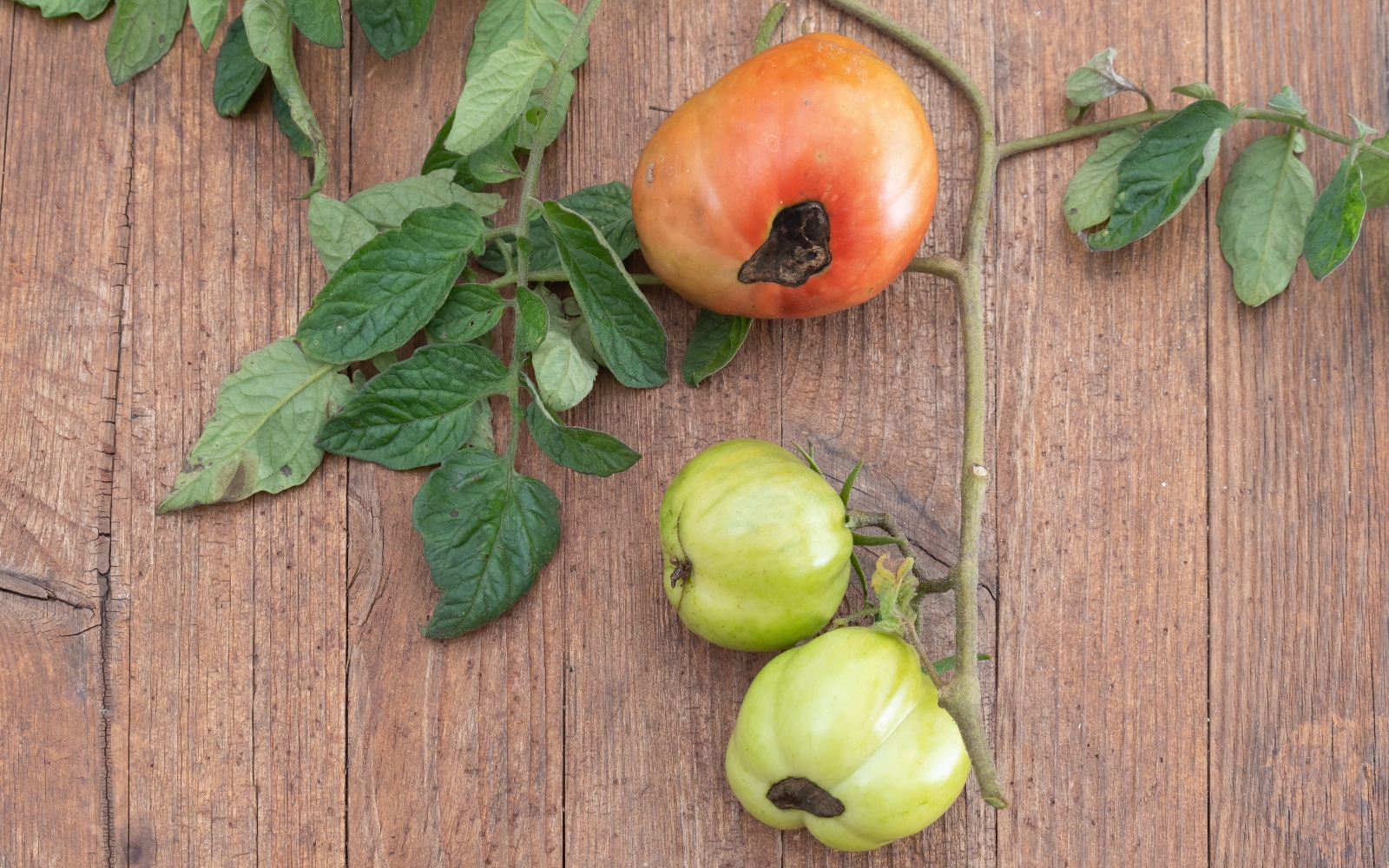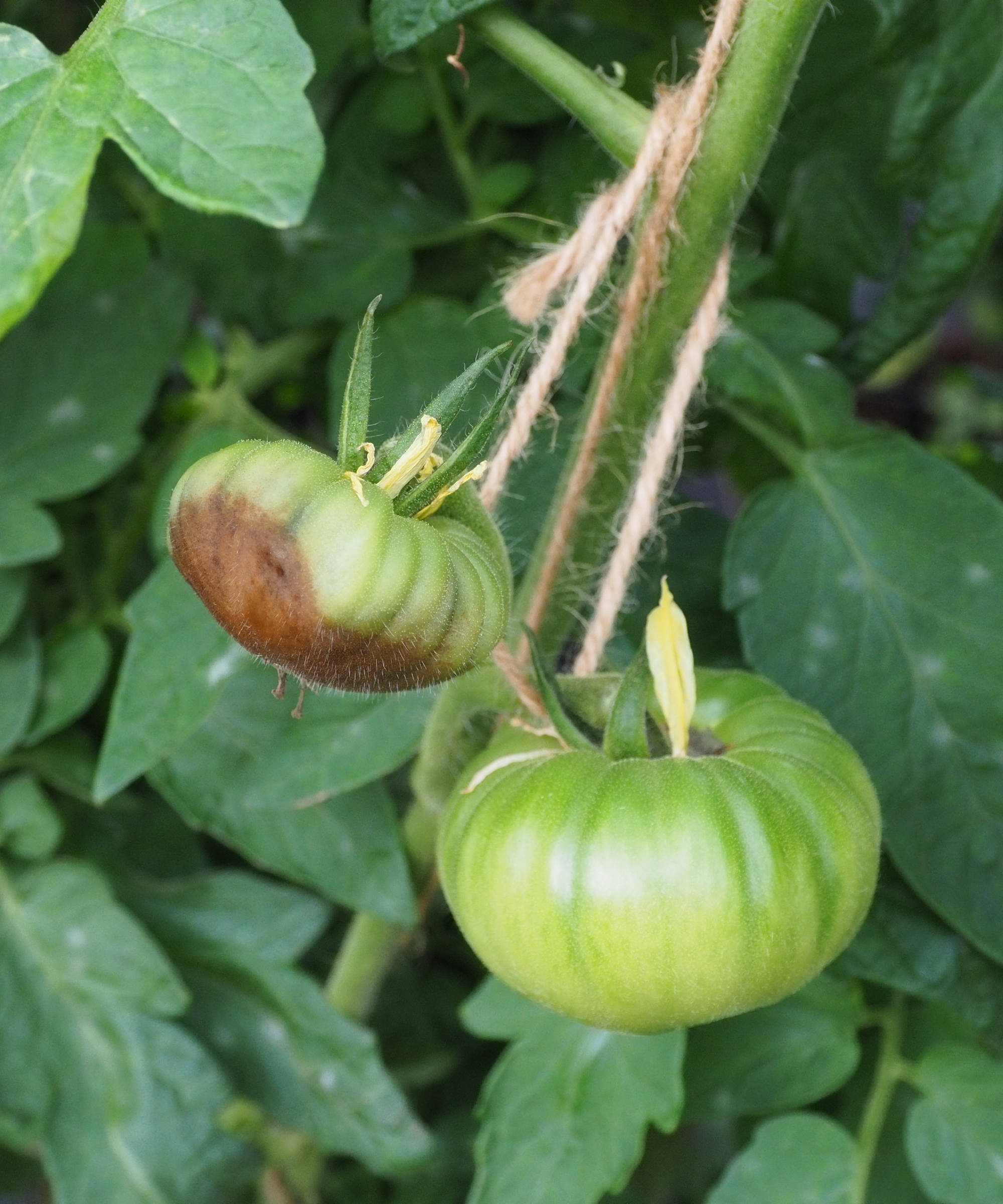Why are the bottoms of my tomatoes turning brown? The expert solution to blossom-end rot
Here's how to spot blossom-end rot – and the expert secret to preventing and curing tomato browning, fast


'Why are the bottoms of my tomatoes turning brown?' you may ask yourself. Because while nothing quite beats the joy of a healthy crop – the process behind growing tomatoes does come with its challenges. And perhaps the most notorious of these problems is blossom-end rot.
If you've noticed dark blotches on the bottom of your tomatoes, your crop is likely suffering from this condition – often caused by a lack of calcium in the fruits. And while tomato growers may be more than aware of this issue, it is not limited to this popular fruit. Instead, it occurs in other vegetable garden ideas, including peppers and aubergines.
However, while blossom-end rot may appear detrimental, the solution to this condition is far from complex. So, if even you've noticed the bottoms of your tomatoes turning brown, you can cure the remainder of your crop – and nurse your plant to full health in time for a delicious harvest.
Why are the bottoms of my tomatoes turning brown?

'Tomatoes with brown, leathery bottoms are suffering from blossom-end rot,' says Kate Russell, the Author of Stop Wasting Your Yard and owner of The Daily Garden. And while many gardeners may believe that the condition is a result of calcium deficiency in the soil, the expert warns that that is not necessarily the case.
'Contrary to popular belief, this condition is frequently caused by irregular watering,' Kate suggests.
'Calcium is an immobile nutrient, which means it takes a lot of water for a plant to move calcium around once it has been absorbed. If a plant does not have enough water to move calcium to where it is needed, brown, leathery bottoms appear on tomatoes, peppers, and summer squashes.'
And Kate is not alone in her suggestion. Expert Andrew Porwol from Garden Centre Shopping similarly adds that knowing when to water plants is key to preventing blossom-end rot and growing tomatoes successfully. 'Calcium deficiency is typically caused by inadequate watering practices,' he says.'
Design expertise in your inbox – from inspiring decorating ideas and beautiful celebrity homes to practical gardening advice and shopping round-ups.
So, unsurprisingly, a professional watering routine is the secret to preventing blossom-end rot. Correct watering can also be key to combating several other tomato diseases, which are commonly spread by poor watering regimes.

How to stop the bottoms of tomatoes turning brown
Wondering 'how much water do tomato plants need?' This is what you need to know to stop blossom-end rot.
1. Improve watering levels
According to Kate, the trick to preventing blossom-end rot, the trick is to water 'regularly and consistently' – as each garden is unique – so finding the exact water level is hard to gauge.
'Watering consistently is key to avoiding and fixing blossom-end rot,' Andrew adds. He recommends setting a schedule to automate the process and ensure your plants always receive the nutrients they need. However, this does come with a warning. 'Be careful when cultivating around your plants as deep cultivation can cause root damage and, in turn, restrict the water your plants can absorb,' he says.
2. Monitor calcium levels
As the experts suggest, watering is the easiest way to improve the health of your tomato plant. This is because the watering impacts the calcium levels in your soil – meaning it is still a good idea to check levels (and know how to add calcium to soil) for overall plant health.
'If you've tested your soil and found it to have low calcium levels, then follow the instructions [that usually suggest] adding fertilizer and lime,' Andrew says.
'Although the problem will not spread from fruit to fruit or plant to plant, it's best to remove the affected tomatoes. You will most likely find that the next crop of tomatoes will be fine as it's typically more prolific in the first crop of the season,' the expert adds.

How do you fix brown bottom tomatoes?
Watering regularly is the most effective way to fix brown bottom tomatoes. If you practice an expert watering routine, the condition will likely lessen, and your remaining tomatoes should be good enough to enjoy. It's also wise to remove any affected tomatoes, as sadly, once blossom-end rot occurs on a specific fruit, it will not go away.
Why are my homegrown tomatoes turning brown on the bottom?
The problem occurs when your fruit does not have the right amount of calcium in its tissue. This can be fixed by regular watering, and knowing how much calcium is in your plant, so you can adjust the levels accordingly.
What is the fastest way to add calcium to soil?
Gardening expert Andrew suggests adding fertilizer and lime to your plants to control calcium levels. However, if you're looking to add calcium to your soil, other natural methods exist. Some gardeners opt for crushed egg or oyster shells – both of which can be ground into a mixture with water and sprayed on your water and plants for quick success.

Megan is the Head of Celebrity Style News at Homes & Gardens, where she leads the celebrity/ news team. She has a history in interior design, travel, and news journalism, having lived and worked in New York, Paris, and, currently, London. Megan has bylines in Livingetc, The Telegraph, and IRK Magazine, and has interviewed the likes of Drew Barrymore, Ayesha Curry, Michelle Keegan, and Tan France, among others. She lives in a London apartment with her antique typewriter and an eclectic espresso cup collection, and dreams of a Kelly Wearstler-designed home.